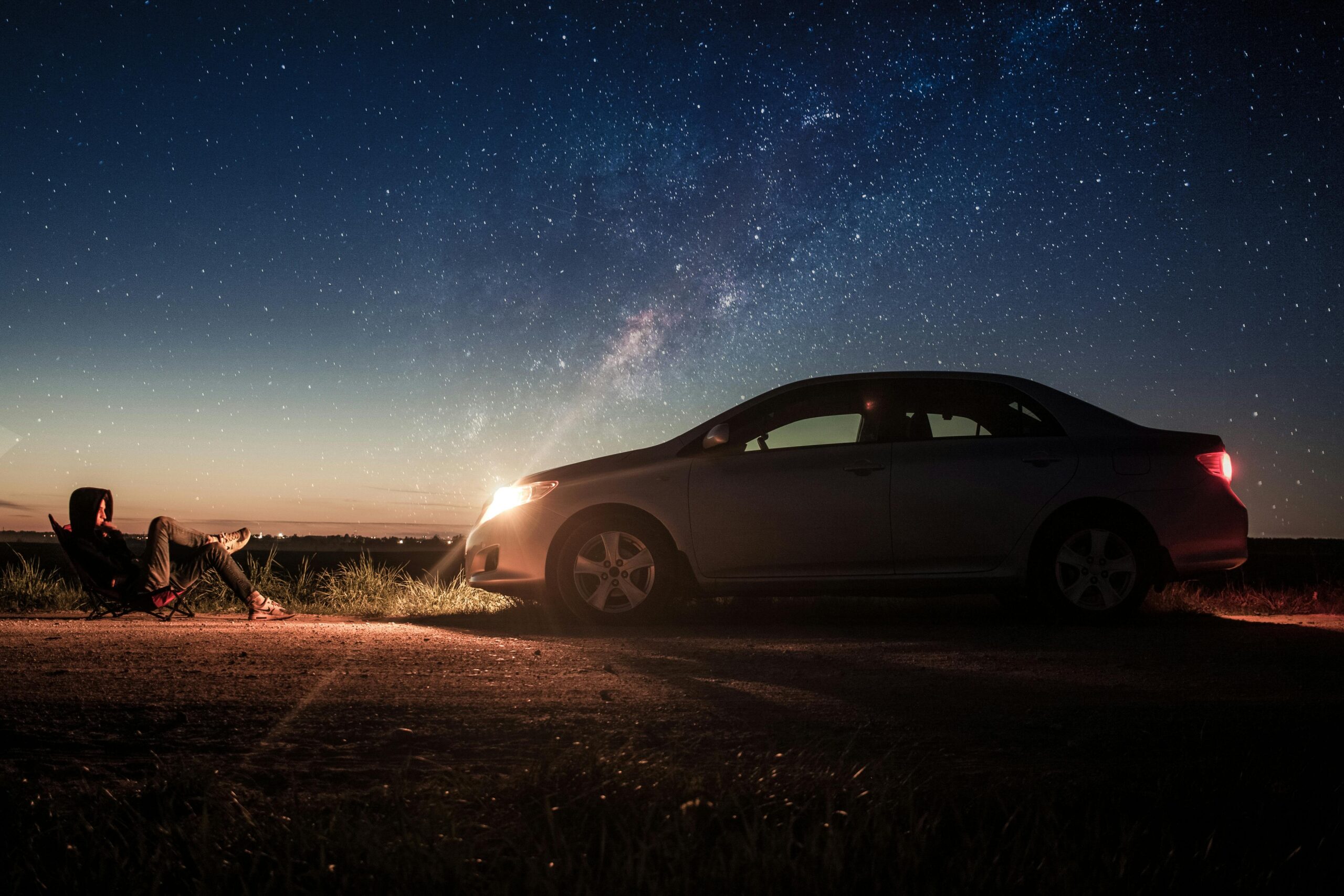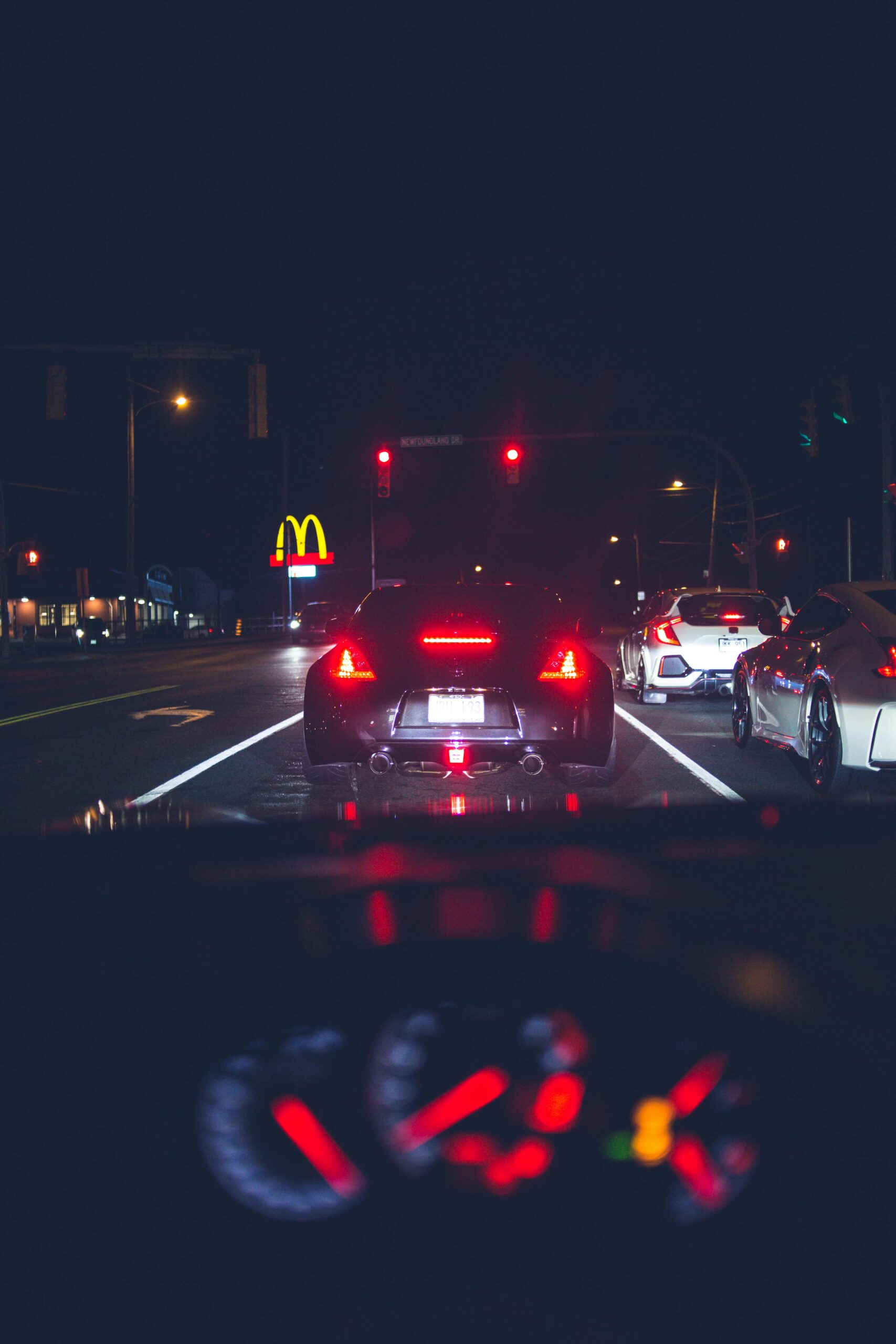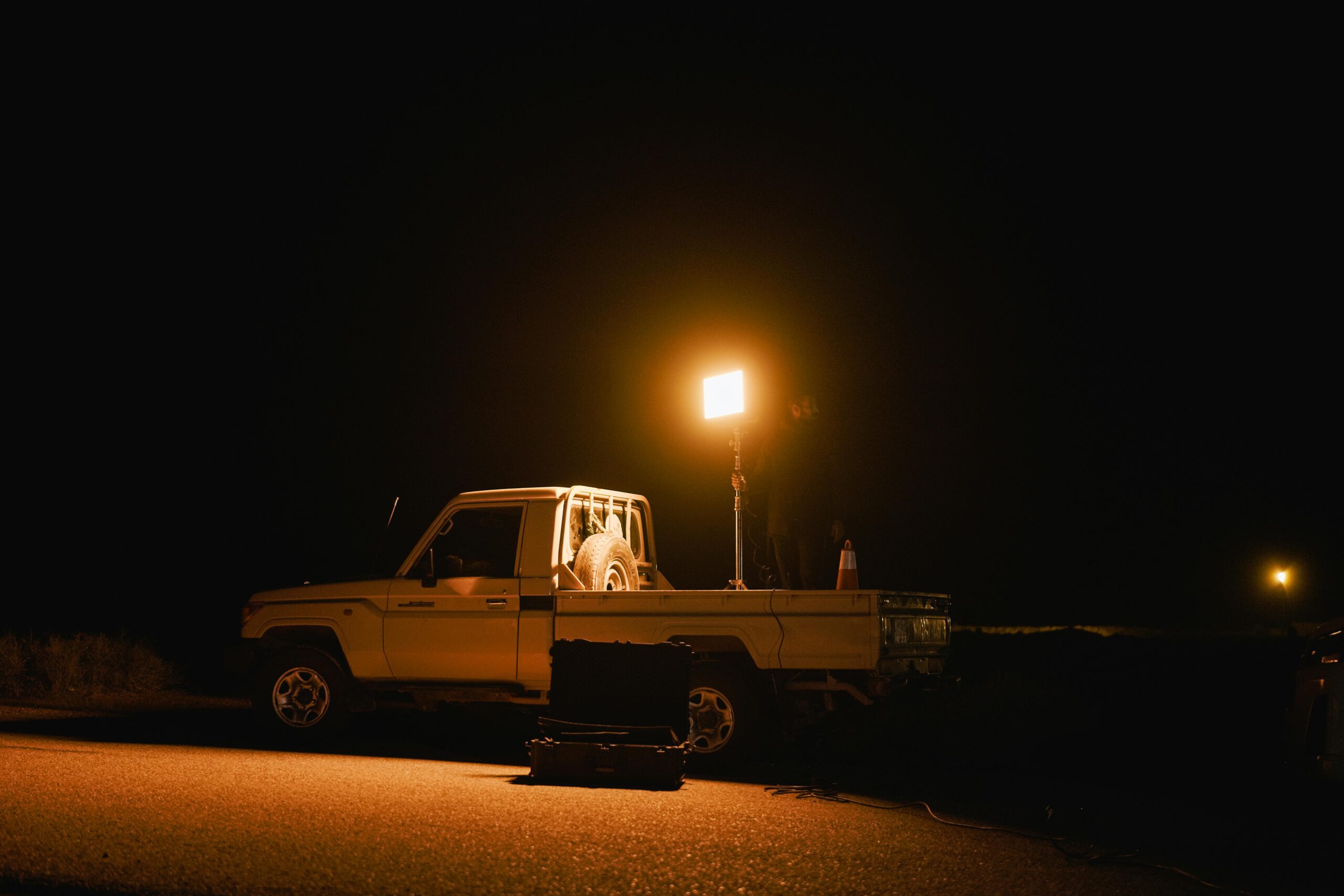Ready to hit the open road? Before you pack up your car and head out after sunset, there are some compelling reasons to reconsider a late-night road trip. As someone who’s logged thousands of miles across varying terrains and conditions, I’ve learned firsthand that when you start your journey matters almost as much as where you’re going.
“I’ve been driving cross-country for over 20 years, and the one rule I never break is avoiding night departures. Nothing ruins a trip faster than exhaustion and poor visibility from the very beginning.” – Michael R., professional tour driver
Here are 5 Major Reasons Why You Shouldn’t Start a Road Trip Late at Night
There’s something undeniably romantic about driving at night on an open highway—less traffic, twinkling stars overhead, and the sense of adventure that comes with traveling while the rest of the world sleeps. Yet despite these appealing aspects, starting a road trip after dark introduces significant risks that could turn your exciting adventure into a dangerous ordeal.
For many driving enthusiasts, the call of the night road is strong. The promise of empty highways and making good time can be tempting, but the statistics around night driving risks tell a sobering story. Here are 5 static reasons for Why You Shouldn’t Start a Road Trip Late at Night.
The Statistical Reality
Night driving accidents’ statistics paint a worrying picture. Nighttime is 3x times as likely to be fatal as daytime hours, according to the National Highway Traffic Safety Administration. This drastic disparity isn’t a freak accident; it results from a number of factors that make the hazard of road trips at night especially scary for the travelers.
The Insurance Institute for Highway Safety’s all-inclusive analysis found that
- The nighttime fatal crash rate per mile driven is approximately three times higher than during the day.
- Despite the vast majority of driving (25%) occurring during the day, 49% of fatal crashes occur during the night.
- Weekend night driving is especially risky, with crash risks at 4x times those of weekday day driving.
- The probability of an ominous crash is maximal between midnight and 4 am.
Dr. Lisa Shives, medical director of the Sleep Medicine Center, says, “The factors of darkness and the tendency of the body to sleep in darkness create a perfect storm for driving risk. Even with caffeine, even your reaction times and cognitive ability are compromised when driving against your circadian rhythm.
Impaired Vision and Perception
One of the most significant road trip safety tips experts emphasize is the importance of optimal visibility—something that’s inherently compromised when driving at night.
Reduced Visual Acuity
At night, your visual acuity decreases dramatically. Even with properly functioning headlights, your ability to see
- Road hazards like debris or potholes
- Wildlife crossing the road
- Critical road signs and markings
- Changes in road conditions or construction zones
All these visual cues become significantly harder to detect when starting a road trip late, potentially leading to dangerous situations requiring split-second decisions with limited information.

Depth Perception Challenges
Night driving risks extend beyond simply seeing objects—they affect how we perceive distance and speed. Headlights create an artificial lighting environment that flattens our depth perception and makes judging distances more difficult. This is particularly problematic when:
- Passing other vehicles
- Merging onto highways
- Navigating unfamiliar exit ramps
- Approaching intersections
Bold fact: Studies show that depth perception can be reduced by up to 40% when driving in darkness compared to daylight conditions.
Fatigue and Drowsiness Dangers
Perhaps the most common reason not to drive at night is the increased risk of driver fatigue. Our bodies are naturally programmed to sleep when it’s dark, making evening road trip risks particularly concerning.
The Body’s Natural Rhythm
Our circadian rhythm—the internal clock that regulates sleep—signals our bodies to produce melatonin when darkness falls. This natural process means that starting a road trip after dark puts you at direct odds with your body’s biological programming.
Microsleeps and Reaction Time
When fighting your natural sleep cycle during a late-night road trip, you become vulnerable to microsleeps—brief, involuntary periods of unconsciousness that can last from a fraction of a second to several seconds.
Road trip timing tips often emphasize that even a 3-4 second microsleep at highway speeds means traveling the length of a football field essentially unconscious—a terrifying prospect for any driver.
Increased Hazards on the Road
Avoiding night driving road trip scenarios isn’t just about your own capabilities—it’s also about the increased hazards present on roadways after dark.

Wildlife Activity & Encounter Risks
Many animal species are more active at night, particularly during dawn and dusk. Starting a road trip late puts you on the road during peak wildlife movement times, increasing the likelihood of dangerous animal crossings.
Wildlife encounter data from the Federal Highway Administration reveals:
- Over 1 million vehicle-animal collisions occur annually in the US
- 80% of wildlife-vehicle collisions occur between dusk and dawn
- November is the peak month for deer collisions due to mating season
- The average cost of a deer collision repair exceeds $4,000
To handle nighttime wildlife encounters safely:
- Use high beams when possible to increase visibility
- Look for eye shine (reflection from animal eyes) along roadsides
- If an animal appears, brake firmly but do not swerve, which can cause rollovers
- Scan the roadside continuously, especially in areas with wildlife crossing signs
Geographic & Seasonal Variations
Night driving risks differ significantly by region and season. Consider these geographic variations:
- Mountain roads: Limited visibility around curves, absence of guardrails in remote areas, and extreme temperature drops that can create sudden fog or ice
- Rural areas: Lack of street lighting, unmarked hazards, and longer emergency response times
- Highways: Higher speeds magnifying reaction time issues, headlight glare from oncoming traffic
- Urban areas: Complex navigation requirements, pedestrian activity, and construction zones
Seasonal considerations further complicate night driving:
- Winter: Earlier sunsets reduce visibility hours, icy conditions reflect headlights creating glare, and snow can obscure lane markings
- Summer: Construction season increases road hazards, vacation traffic means more unfamiliar drivers, and sudden thunderstorms reduce visibility
- Spring/Fall: Migrating wildlife activity increases, transitional weather can create fog, and varying sunset times can catch travelers unprepared

Impaired Drivers
One of the sobering road trip safety tips experts emphasize is awareness of other drivers’ conditions. The percentage of impaired drivers on the road increases significantly at night, particularly after midnight and on weekends. By avoiding night driving road trip departures, you reduce your exposure to potentially dangerous drivers.
- DUI arrests peak between midnight and 3 AM
- Saturday night has 3x more impaired drivers than weekday mornings
- Fatal crashes involving alcohol impairment are 4x higher at night
Reduced Emergency Services
If something does go wrong when driving at night on road trip routes, you’ll likely face longer wait times for emergency services. Rural areas may have limited after-hours coverage, and even in populated areas, response times often increase at night.
Emergency preparedness becomes even more critical for night driving. Your night driving emergency kit should include:
- High-visibility reflective vest and warning triangles
- Powerful flashlight with extra batteries
- Portable phone charger or power bank
- Basic first aid supplies
- Warm blankets (hypothermia risk increases at night)
- Non-perishable food and water
- Paper maps (in case of no cell service)
The Mental Toll of Night Driving
Beyond physical safety concerns, there’s a psychological component to avoid night driving road trip recommendations that’s often overlooked.
Anxiety and Stress
Navigating unfamiliar routes is already challenging—doing so in darkness compounds the difficulty. The stress of straining to see road signs, searching for exits, and maintaining vigilance against unexpected hazards creates a mentally taxing experience that can quickly turn an exciting road trip into an exhausting ordeal.
Psychological Effects of Darkness
Research from traffic psychology reveals how darkness fundamentally alters driver psychology:
- Distance perception distortion: Drivers consistently underestimate distances to objects in darkness
- Time perception changes: Night driving often creates a phenomenon called “highway hypnosis” where time awareness becomes distorted
- Increased cognitive load: Your brain works significantly harder processing limited visual information at night
- Stress hormone production: Driving in darkness increases cortisol levels by up to 50% compared to daylight driving
Dr. Jonathan Whitaker, transportation psychologist, explains: “The human brain relies heavily on peripheral visual cues that are severely limited at night. This creates a cascade of compensatory mental processes that accelerate driver fatigue.”
Demographics and Night Driving Risk
Different age groups face unique night driving challenges:
- Younger drivers (16-25): Less experience with night conditions combined with higher likelihood of fatigue and distraction creates particularly high risk
- Middle-aged drivers (26-64): Often dealing with work fatigue and family obligations that can compromise alertness
- Senior drivers (65+): Experience natural changes in night vision, with drivers over 50 requiring twice as much light to see as 30-year-olds
According to the National Highway Traffic Safety Administration, drivers over 65 have crash rates at night nearly equal to teenage drivers despite generally being safer daytime drivers.
Recovery Time Considerations
The science of travel fatigue and recovery reveals important patterns:
- Your body requires approximately one hour of recovery time for every 100 miles driven
- Night driving extends this recovery time by 30-40% due to disruption of natural sleep patterns
- Crossing time zones while driving at night compounds fatigue through circadian rhythm disruption
- Most people require a full night’s sleep to reset after 6+ hours of night driving
SEE ALSO
- Is Cambridge worth visiting? 10 Unique things to do in Cambridge , Ma
- Can You Do a Day Trip to Kyoto from Tokyo? Complete Guide 2025
Pro Planning for Safety and Enjoyment
Proper road trip planning isn’t just about safety—it’s about maximizing enjoyment. Starting fresh and alert means you’ll actually appreciate the journey rather than merely enduring it.
The Optimal Departure Window
The best time to start road trip journeys is typically early morning, between 6-10 AM. This timeframe offers
- Maximum daylight hours ahead
- Fresh, well-rested driver and passengers
- Better visibility throughout your journey
- Aligned with your body’s natural wakefulness cycle
Benefits of early morning starts (4-6 AM) deserve special consideration for long journeys:
- Gradual light transition: Starting in darkness but quickly gaining daylight gives your eyes time to adjust
- Traffic advantages: You beat both rush hour and tourist traffic to major attractions
- Temperature benefits: Cooler morning temperatures are better for vehicle performance
- Natural alertness cycle: Most people experience a natural cortisol-driven alertness boost in early morning
Use this simple decision-making process to determine your optimal start time:
- How far is your first day’s destination? (Over 8 hours = early morning start)
- What terrain will you encounter? (Mountains or unfamiliar areas = daylight driving priority)
- Who’s driving? (New drivers or seniors = mid-morning starts ideal)
- Weather forecast? (Poor conditions = adjust for maximum daylight driving)
Alternatives to Night Driving
Rather than pushing through darkness, consider these strategic alternatives:
- Strategic overnight stops: Plan accommodations at 7-8 hour driving intervals
- Afternoon arrival strategy: Time your trips to reach destinations before sunset
- Split-day approach: Drive morning hours, take extended afternoon break, resume for 1-2 hours before sunset
- Transportation alternatives: Consider trains or buses for overnight segments
Pre-Trip Preparation
If you absolutely must travel during nighttime hours, these travel safety at night precautions become even more crucial:
- Ensure headlights, taillights, and turn signals are functioning properly
- Clean all windows and mirrors for maximum visibility
- Have your vision checked if you haven’t recently—night vision issues often appear first
- Plan for frequent breaks—at least every 90-120 minutes
- Consider having a driving partner to rotate shifts
Technological Solutions for Safer Night Driving
Modern vehicles offer technologies that can mitigate some night driving risks:
- Adaptive headlights: These turn with your steering wheel to illuminate around curves
- Night vision systems: Available in premium vehicles, these use infrared to detect pedestrians or animals beyond headlight range
- Lane departure warnings: Helpful when fatigue might cause drifting
- Automatic emergency braking: Provides backup safety if reaction times are compromised
- Driver attention monitors: Some newer vehicles can detect drowsiness patterns
Even with basic vehicles, aftermarket options like enhanced headlight bulbs (ensuring they’re road legal) and anti-glare glasses can improve nighttime visibility significantly.
Missing the Journey
One of the primary joys of road trips is experiencing new landscapes and discoveries along the way. Starting road trip late means trading these visual experiences for darkness, essentially reducing your trip to merely reaching a destination rather than enjoying the journey.
Real Experiences: Night Driving Testimonials
“I thought starting at 10 PM would help us avoid traffic heading to Florida. Four hours in, I could barely keep my eyes open. We had to find an unplanned motel stop at 2 AM when I realized I was falling asleep despite coffee and open windows. The ‘time saved’ cost us more in the extra hotel night and stress.” – Jenna T., family vacation planner
“As a retired truck driver with over 2 million safe miles, I can tell you that night driving is a professional skill that takes years to develop. Even with all my experience, I never start personal road trips after 2 PM.” – Robert M., retired commercial driver
More Travel Guides For World Tour
Thanks for looking! I hope this guide gave you some ideas for the Why You Shouldn’t Start a Road Trip Late at Night: A Safety Guide
Create a budget planner for your trip to Europe by understanding this Blog. Highly suggest reading this Europe Budget Planner
Don’t forget to bookmark my blog for more Travel guides coming soon!


